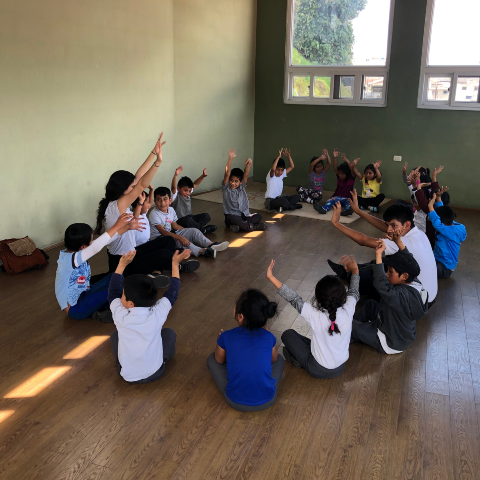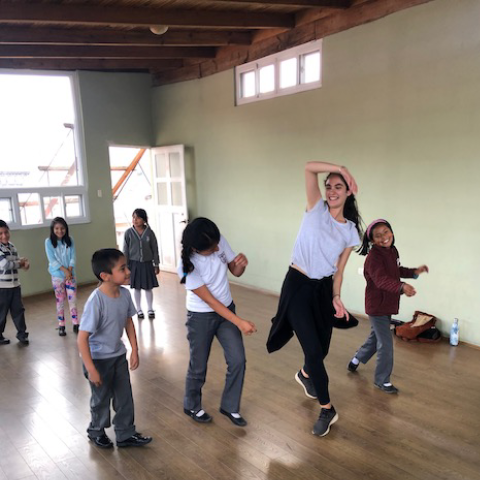Francesca Flamminio's Project
The Impact of Dance Education in Post-conflict Communities: A Case Study of Quetzaltenango, Guatemala
From 1960 to 1996, the Guatemalan Civil War fostered a society characterized by brutal repression, state-sponsored campaigns of terror, and armed conflict.While the signing of the Peace Accords in 1996 began the country’s transition to democracy and the gradual demilitarization of the state, there are still enduring social effects, such as the dissolution of community bonds and a learned fear of leadership, in present-day Guatemala. This research explores the effectiveness of dance education as a means to foster the development of effective leadership and community-building skills in students in Quetzaltenango, Guatemala. Through the analysis of a five-week dance and movement education program, this study examines how the strengthening of self-confidence, creativity, effective communication, and collaboration skills in youth can create a positive impact in a post-conflict society. My research assesses the potential contributions of dance and artistic education to post-war community development and peace-building processes.

Methodology
In the five-week dance education program, 70 male and female students, between the ages of 6 and 18, participated in 2-3 dance classes each week. The dance curriculum focused on the development of key leadership and community-building skills and included three main class components: improvisation, dance creation in small groups, and dance performance.
During the improvisation portion, students performed original movements based on a series of guided prompts related to emotions and imagery. These improvisation exercises engaged creative problem-solving skills, as students only had seconds to process the movement prompt, decide how to interpret the concept or idea through movement, and present their creation to the rest of the class.
During the group dance-making section, students worked together in small groups to create their own choreography and movement patterns. The need for collaboration and effective communication in the choreographic process allowed students to develop their abilities to both express their own ideas effectively and listen to the ideas of their peers.
At the end of each class, there was always an in-class performance in which students either presented a group choreography or a short dance combination. Within this final section of the class, students developed confidence in themselves and trust in their fellow group mates.

Results
I conducted qualitative interviews at the end of my investigation to observe how effectively the dance classes developed leadership and community-building skills in participating students. 2 male and 7 female students participated in interviews that focused on understanding their experiences within the dance education program and observing their development of the specific leadership and community-building skills: self-confidence, creativity, effective communication with others, and collaboration.
In all 9 interviews, the students expressed the gradual development of self-confidence through learning and creating their own movement. For example, a female, high school student reflected upon her own personal transformation. She noted that she felt very shy and hesitant to participate at the beginning of the dance classes. However, with time, she discovered that when she was able to “let go of her own fear of performing the movements well or poorly” she was able to “develop trust in herself and her intuitions.”
Every student mentioned that they enjoyed the opportunity to use creativity to express themselves in the dance classes. A male, high school student insightfully shared, “dance is something that brought us together, but also allowed us to express ourselves. When we made dances in class, we did not have to make something that was ‘perfect’ or even ‘good.’ We made something that was ours, so it was important.”
When students discussed their experience of community in the dance classes, the words: respect, team, and sharing were mentioned in the majority of their responses. One of the female, high school students explained her experience of collaboration and communication, stating “we became aware of all of our strengths and weaknesses. This helps us understand how we can work together to help each other grow.” Additionally, many students expressed that performing with their classmates was a unifying experience. One female student shared that she “learned to trust her classmates more when they worked together as a team to perform a dance.”
Observations of the dance classes and the student interviews demonstrate that dance education strengthens essential leadership and community-building skills which counteract the negative social effects present in Quetzaltenango, Guatemala. This finding emphasizes that the implementation of dance education opportunities should be considered as a mechanism of leadership development and social healing in post-conflict communities.